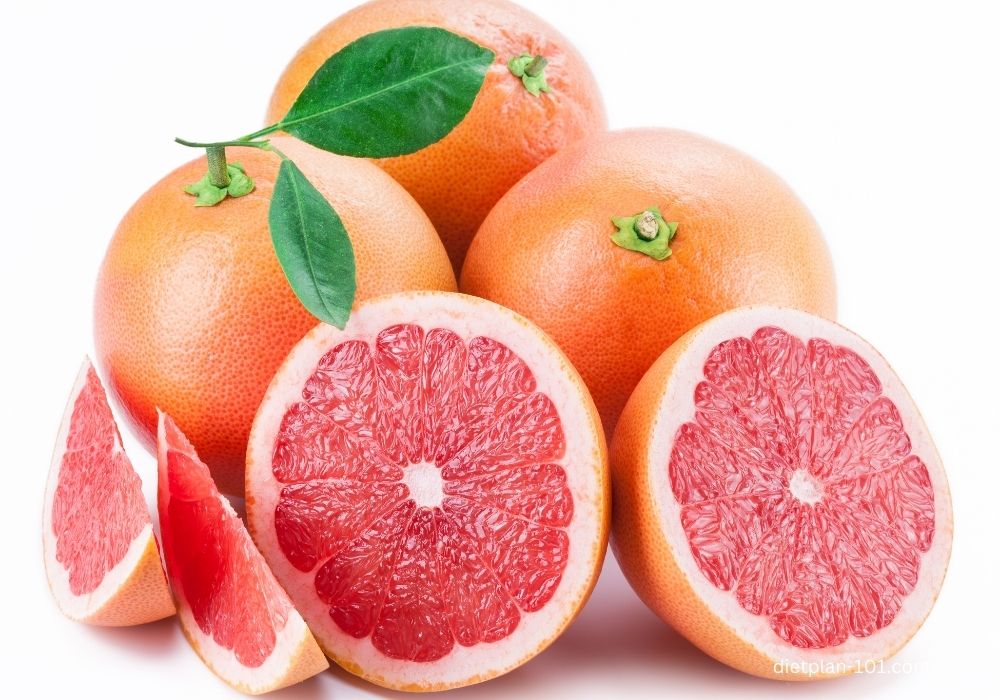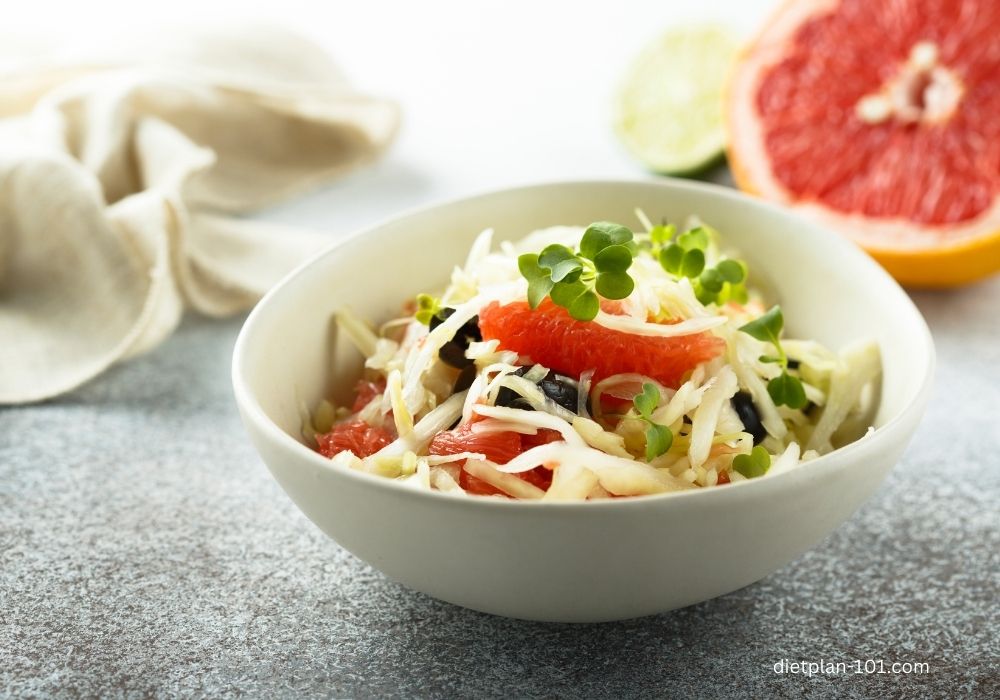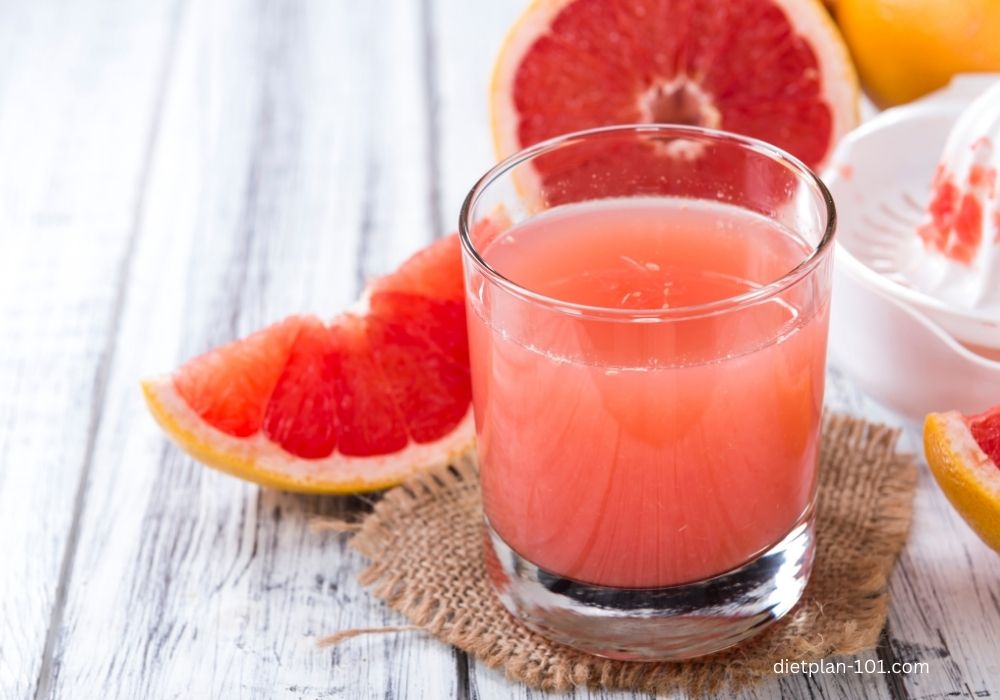Let’s be real, grapefruit is the kind of fruit that demands attention with its tart taste and tangy aroma. But what if we told you there’s more to this prima donna than meets the eye? That’s right, we’re here to unlock the grapefruit’s potential and show you how to use it in ways that will make your taste buds sing.
From sweet to savory, salads to cocktails, this citrus fruit is a versatile superstar just waiting to be discovered. So, put on your chef’s hat, and let’s give grapefruit the red-carpet treatment it deserves. In this post, we’ll look at different grapefruit varieties and how they might be used in recipes.
Popular Grapefruit Varieties
These are some of the common grapefruit varieties, along with their flavor profiles:
Related:
White grapefruit is mild and sweet with a pale yellow flesh. This variety of the fruit is perfect for those who do not want an overpowering grapefruit taste.
Pink grapefruit has a tangy and slightly bitter taste with a hint of sweetness. Its flesh is pinkish-red, as well its skin which can be either yellow or pink in color. If you like something that’s tangy—but not too sour—this type is for you!
Red grapefruit is the sweetest and juiciest of all grapefruit. Its deep red flesh, yellow or red skin make it perfect for those who want a sweeter taste—or anyone looking to juice!
When it comes to grapefruit recipes, the type of grapefruit you choose makes all the difference. Want it sweet? red grapefruit is your go-to. Feeling tangy? Pink grapefruit is the way to go. And for a mild, sweet taste, white grapefruit is the answer. So, consider your flavor profile and choose accordingly.
Grapefruit is actually a hybrid fruit that was created by cross-breeding a pomelo and an orange.
Using Grapefruit in Sweet Recipes
Grapefruit is a great addition to sweet recipes, as it adds a unique tangy flavor that pairs well with sweet ingredients. Here are some tips for using grapefruit in sweet recipes:
- Balance with Sugar:
Since grapefruit can be quite tart, it’s important to balance out the flavor with sugar. When adding grapefruit to a sweet recipe, taste the fruit first to determine how much sugar you’ll need to add. - Use Grapefruit in Fruit Salads:
Grapefruit can be a great addition to fruit salads, adding a refreshing and tangy flavor. Simply peel and segment the grapefruit and mix it with other fruits like strawberries, blueberries, and kiwi. - Make Grapefruit Curd:
Grapefruit curd is a delicious spread that can be used on toast, scones, or as a filling in cakes and tarts. To make grapefruit curd, whisk together egg yolks, sugar, grapefruit juice, and butter in a saucepan over low heat until thickened. - Make Grapefruit Sorbet:
Grapefruit sorbet is a refreshing dessert that’s perfect for hot summer days. Simply mix grapefruit juice, water, and sugar together, and churn in an ice cream maker until frozen and scoopable. - Add Grapefruit to Cakes and Baked Goods:
Grapefruit can be a great addition to cakes and baked goods, adding a unique flavor and texture. Try adding grapefruit zest or juice to muffins, cakes, and quick breads for a tangy twist.
Grapefruit is a versatile fruit that can be used in various sweet recipes. Whether you’re making fruit salad, grapefruit curd, sorbet, or adding it to baked goods, grapefruit can add a delicious flavor to your desserts. By following these tips, you’ll be able to use grapefruit in your sweet recipes with confidence and creativity.
Using Grapefruit in Savory Recipes
Who says grapefruit is only for sweet dishes? This sour fruit can add a tangy twist to your savory dishes too. From salads to salmon, grapefruit can elevate your taste buds to cloud nine. But, hey, be careful not to overpower the other flavors. Mix it with complementary flavors like avocado, arugula, and seafood for a perfect balance of taste. And, if you’re not sure where to start, don’t worry, we’ve got your back! Check out our tips for using grapefruit in savory recipes and start incorporating this fruit into your next meal.
Here are some tasty savory recipes that you may try.
Grapefruit and Shrimp Salad: Mix cooked shrimp, grapefruit segments, mixed greens, avocado, and a citrus vinaigrette for a refreshing salad.
Grapefruit and Chicken Skewers: Marinate chicken in a mixture of grapefruit juice, garlic, and herbs.
Grapefruit and Beet Salad: Combine roasted beets, grapefruit segments, goat cheese, and walnuts for a nutritious salad.
Grapefruit and Tuna Salad: Mix canned tuna with grapefruit segments, sliced red onion, parsley, and a lemon and olive oil dressing for a protein-packed lunch.
Grapefruit Glazed Salmon: Brush salmon fillets with a mixture of grapefruit juice, honey, soy sauce, and ginger before baking. This recipe is one of our favorites.
Tips for Juicing Grapefruit
Here are some tips for juicing grapefruit:
- Choose ripe and juicy grapefruits. Ripe grapefruits are heavy, firm, and have a slightly soft spot on the skin. They should also smell fragrant.
- Roll the grapefruit before juicing. Roll the grapefruit back and forth on a countertop or cutting board with the palm of your hand to loosen the juice.
- Cut the grapefruit in half. Use a sharp knife to cut the grapefruit in half, then use a citrus juicer or reamer to extract the juice.
- Strain the juice. To remove any pulp and seeds, strain the grapefruit juice through a fine-mesh strainer or cheesecloth.
How to Storing and Preserving Grapefruit
If you have an abundance of grapefruit, you may want to consider preserving them. Grapefruit can be preserved through canning or freezing. Here are some tips for storing and preserving grapefruit:
Canning Grapefruit: Canning grapefruit is a great way to preserve the fruit for later use. Here’s how to do it:
- Peel and segment the grapefruit.
- Sterilize the jars and lids.
- Pack the grapefruit segments into the jars, leaving about 1/2 inch of headspace.
- Add hot syrup to the jars, leaving 1/2 inch of headspace.
- Remove any air bubbles and adjust the headspace if needed.
- Wipe the rims of the jars clean and place the lids on top.
- Process the jars in a boiling water canner for the recommended time.
- Remove the jars from the canner and let them cool completely before storing them.
Freezing Grapefruit: Freezing grapefruit is another great way to preserve the fruit. Here’s how to do it:
- Peel and segment the grapefruit.
- Place the grapefruit segments in a single layer on a baking sheet and freeze until firm.
- Transfer the frozen grapefruit segments to a freezer-safe container or bag.
- Label the container with the date and store it in the freezer for up to 6 months.
Storing Fresh Grapefruit: To keep your fresh grapefruit fresh, follow these tips:
- Store grapefruit at room temperature for up to a week or in the refrigerator for up to 3 weeks.
- Keep grapefruit away from other fruits and vegetables, as they can cause the fruit to ripen too quickly.
- To prevent grapefruit from drying out, store it in a plastic bag or wrap it in plastic wrap.
The Bottom Line
Grapefruit is a very versatile fruit that we use in various recipes. From sweet to savory, there are many ways to incorporate grapefruit into your cooking. So why not challenge yourself to try a new grapefruit recipe today? Share your creations with us in the comments below and inspire others to join in on the fun.
Related article: Discover how the grapefruit diet plan can kickstart your weight loss journey
Grapefruit facts
- Grapefruit is actually a hybrid fruit that was created by cross-breeding a pomelo and an orange.
- In the 1930s, grapefruit was known as the “fruit cocktail” because it was a popular ingredient in cocktails and was often paired with other fruits.
- Grapefruit is an excellent source of vitamin C, which helps boost your immune system and keep your skin healthy.
- Grapefruit contains a compound called naringin, which can interact with some medications and make them less effective. So, be sure to check with your doctor before consuming grapefruit if you’re taking any medication.
- Grapefruit is low in calories and high in fiber, making it a great choice for weight loss and maintaining a healthy digestive system.
- Some studies suggest that regularly eating grapefruit may help lower cholesterol levels and reduce the risk of heart disease.
- Pink and red grapefruit contains lycopene, a powerful antioxidant that may help protect against certain types of cancer.
So the next time you reach for a grapefruit, remember these fun facts and enjoy all the health benefits that this delicious fruit has to offer!















